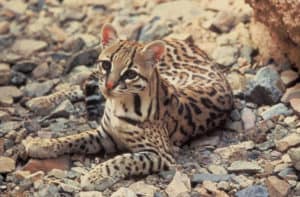Have you been thinking about adding an ocelot to your family? Although it seems crazy, it’s actually legal to keep these wonderful animals as pets in certain states. However, adopting an ocelot involves a very different process than adopting a cat or dog. If you’re lucky enough to live in one of these areas and you’re up for a challenge, read about how much it will cost to welcome an ocelot into your home!
Ocelots: A Brief Overview
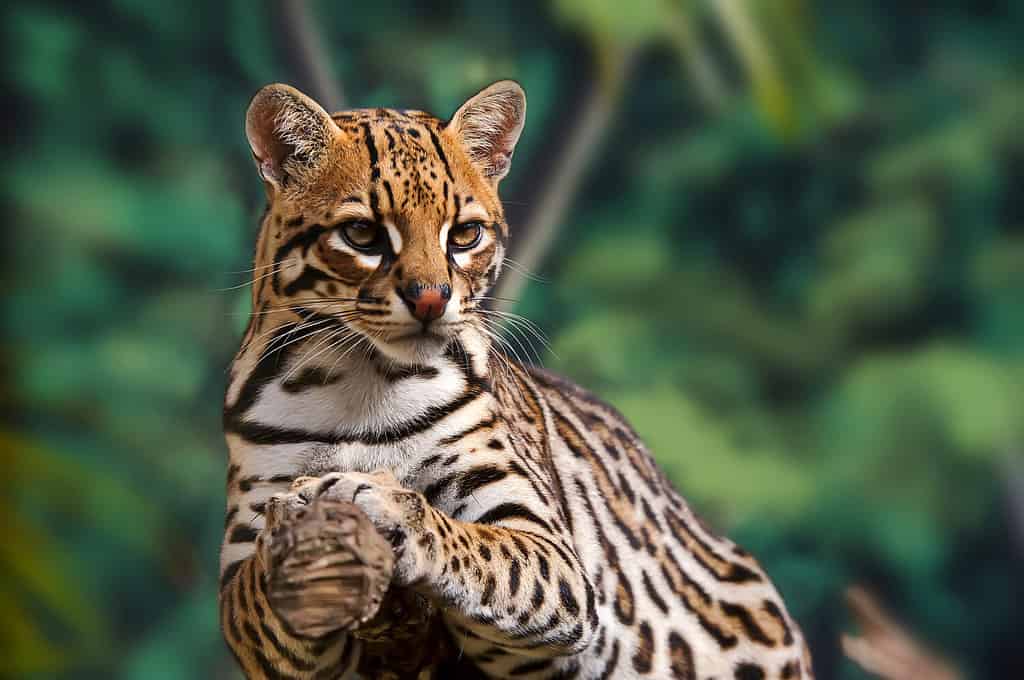
Although ocelots were once quite common in the United States, they’re much more difficult to find today.
©Leonardo Mercon/Shutterstock.com
Although they may look similar to the beautiful Bengal cat, ocelots are wild cats. Depending on their gender, an adult ocelot will grow to be roughly 15 to 20 inches tall and weigh about 15 to 35 pounds at maturity. According to Defenders of Wildlife, ocelots are native to “southern Texas to northern Argentina. This species lives in a variety of vegetated habitats, from tropical and subtropical rainforests in Central and South America to semi-arid thorn scrub in Texas and northern Mexico.”
Although ocelots are abundant and considered a species of the least concern, wild ocelot populations in the United States are limited. In America, far more ocelots are kept in captivity than out in the wild. The reasons for their dwindling numbers are loss of natural habitat, human intervention, and rapid urbanization. On average, ocelots will live for roughly 10 years in the wild. However, they can enjoy a much longer life in captivity, and some even live into their twenties.
Where Is It Legal to Own an Ocelot?

Ocelots can run at speeds up to nearly 40 miles per hour.
©Thorsten Spoerlein/ via Getty Images
At one point, ocelots were considered endangered, and owning them was illegal no matter which state you lived in. However, since then, there are several areas that have loosened their laws regarding keeping these wild cats as pets. According to Big Cat Rescue, “4 states have no laws on keeping dangerous wild animals: Alabama, Nevada, North Carolina, and Wisconsin. 6 states do not ban or regulate keeping big cats: Alabama, Nevada, North Carolina, Wisconsin, Delaware, and Oklahoma.” Even if you live in one of these areas, there may be additional requirements that must be met prior to purchasing an ocelot, so it’s best to double-check.
Even though it might be legal to own an ocelot, it doesn’t make it easy. In general, professionals recommend against keeping ocelots as pets. At the end of the day, ocelots are wild animals, and many of them will have a hard time thriving in a house-cat lifestyle. Ocelots enjoy climbing and staying active. If kept inside your home, there is a significant risk for furniture and belongings to be damaged. In addition, keeping an ocelot may pose a risk to other pets in the household or neighborhood. They have an innate drive to hunt, and because of this, proper outdoor caging is a must. Tragically, ocelots are not big cuddlers either. Keep these things in mind before making the decision to bring one into your home.
How Much Does an Ocelot Cost?

The price of an ocelot will fluctuate depending on your location.
©Eric Kilby / CC BY-SA 2.0 – License
The purchase price of an ocelot will vary greatly depending on a few factors. The age, health, coloration, and size will all play a role in determining the cost. In general, an ocelot will cost roughly $15,000. Compared to other big cats, ocelots are relatively difficult to obtain and rare in the United States. Their scarcity influences their price, and as they become more difficult to find, this number will only climb.
However, owning an ocelot will cost far more than their one-time purchase price. There are several other expenses that ocelot owners will encounter during their first year. Building a proper habitat, feeding them a healthy diet, and making sure that they get adequate veterinary care are all additional expenses.
Cost of Medical Expenses for Ocelots
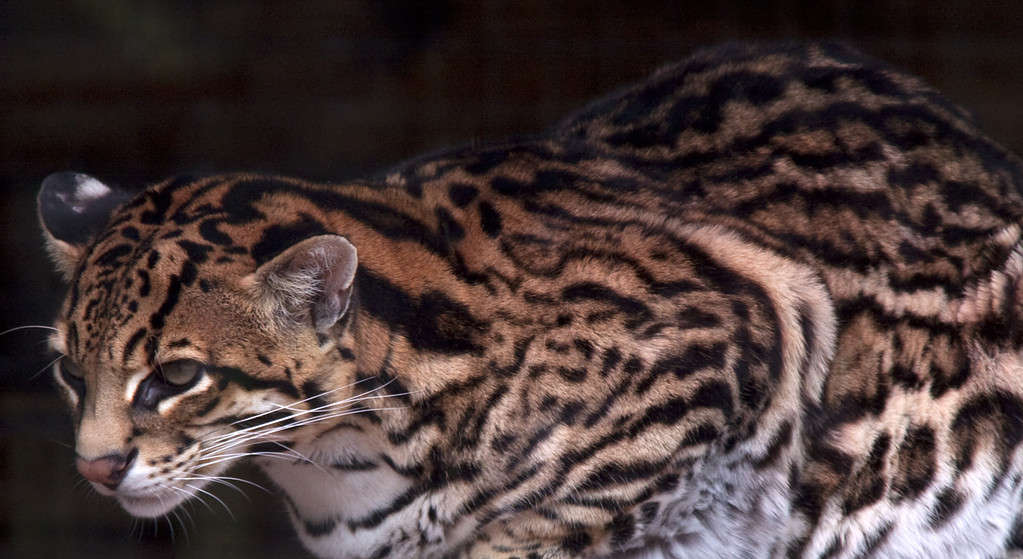
The spots on an ocelot’s coat are much like human fingerprints. Each animal is completely unique.
©Tony Hisgett / CC BY 2.0 – License
Unlike cats or dogs, ocelots are wild animals, which means that they’ll need specialized veterinary care. Depending on where you’re located, it may be difficult to find a vet that’s capable of addressing your ocelot’s needs. It is recommended only to purchase an ocelot if you live less than one hour away from an exotic animal vet. This is because most typical vets will refuse to treat an ocelot because of legal liability, even if it’s a genuine medical emergency. Each routine vet visit can cost between $200 and $500, and emergency procedures can cost thousands.
Transportation to and from the vet may also prove to be expensive. A proper cage for an ocelot can cost $500 to $1,000. The vehicle driven will also need to be big enough to accommodate a cage of this size. A standard sedan won’t be large enough, so buying a minivan or truck is preferable. In the event you can’t properly transport your ocelot to the vet, an in-home call may need to be made. Home visits are usually more expensive, so be prepared to pay above the $500 threshold if this winds up being the case.
Cost of Food and Supplies for Ocelots
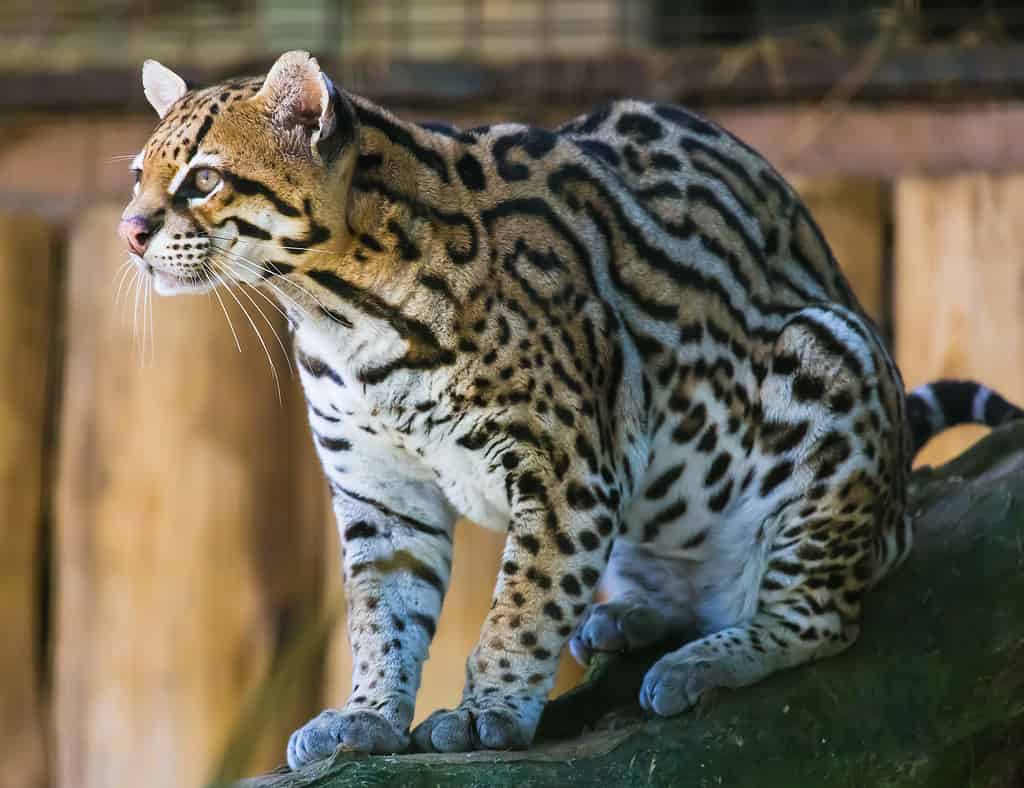
Ocelots are nocturnal hunters. This means that their hours of peak activity are during the night.
©João Carlos Medau / CC BY 2.0 – License
Since ocelots are wild cats, their diet is highly specialized. In the wild, the diet of an ocelot consists of birds, fish, rodents, rabbits, raccoons, reptiles, and even small mammals such as deer. It’s important to make sure that your pet ocelot is getting the proper nutrition that they need, so try to simulate their natural diet as closely as possible. In order to accomplish this, feed your ocelot both high-quality organ and muscle meats. In addition to their daily food, providing them with vitamins is also important. An average-sized adult ocelot will eat between one and two pounds of food daily.
On average, feeding your ocelot will cost between $1,000 and $1,500 annually, depending on what meats and vitamins you provide. They require a diet rich in protein, calcium, taurine, and iron. As always, it’s important to talk to your vet to discuss your ocelot’s personal needs. Be sure to connect with an exotic animal vet and form a dietary plan before you bring your ocelot home.
Other Expenses Associated with Purchasing an Ocelot
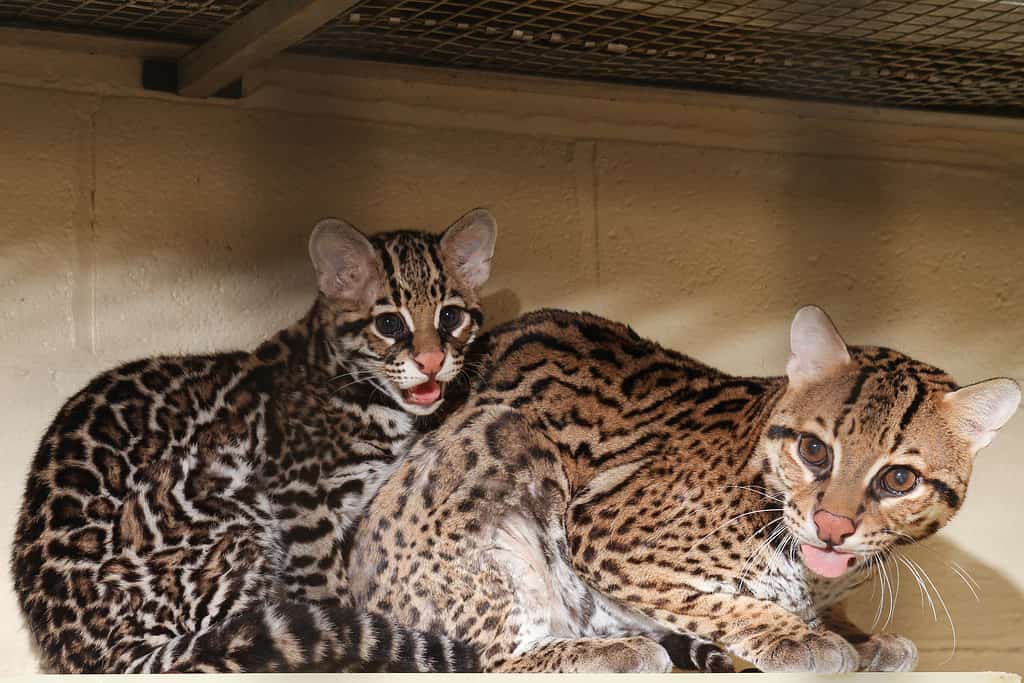
It’s crucial to give ocelots the best quality of life possible.
©Mark Dumont / CC BY 2.0 – License
In addition to all the expenses we’ve listed above, there are easily forgotten ones as well. One major expense associated with purchasing an ocelot will likely be liability insurance. Depending on where you plan to keep your ocelot, state laws might require liability insurance, which will cost somewhere between $10,000 and $15,000 per year. Setting up a proper outdoor habitat for your ocelot is also paramount. This will be a hefty expense, but luckily, you’ll only have to pay it once. On average, sufficient outdoor caging will cost between $2,000 and $3,000.
With everything considered, owning an ocelot will cost roughly $35,000 to $40,000 the first year you bring them home. Each year after, you can expect to pay slightly less, at around $20,000. As we stated above, ocelots can live up to 20 years in captivity, so this is a long-term financial commitment. Make sure you’ll be able to budget properly before attempting to bring an ocelot home!
Final Thoughts
If you’re committed to becoming an ocelot parent, the most important thing is to budget accordingly. It’s crucial that you give your ocelot the best quality of life possible and try to simulate their wild habitat and diet closely. It might be challenging, but ignoring your pet’s needs will leave them unhappy and potentially sick. Because of this, it’s crucial that a lot of thought and planning goes into this huge decision. Although owning an ocelot is not easy or inexpensive, it is certainly possible, and may be a rewarding experience for those who firmly commit.
The photo featured at the top of this post is © Leonardo Mercon/Shutterstock.com
Thank you for reading! Have some feedback for us? Contact the AZ Animals editorial team.





